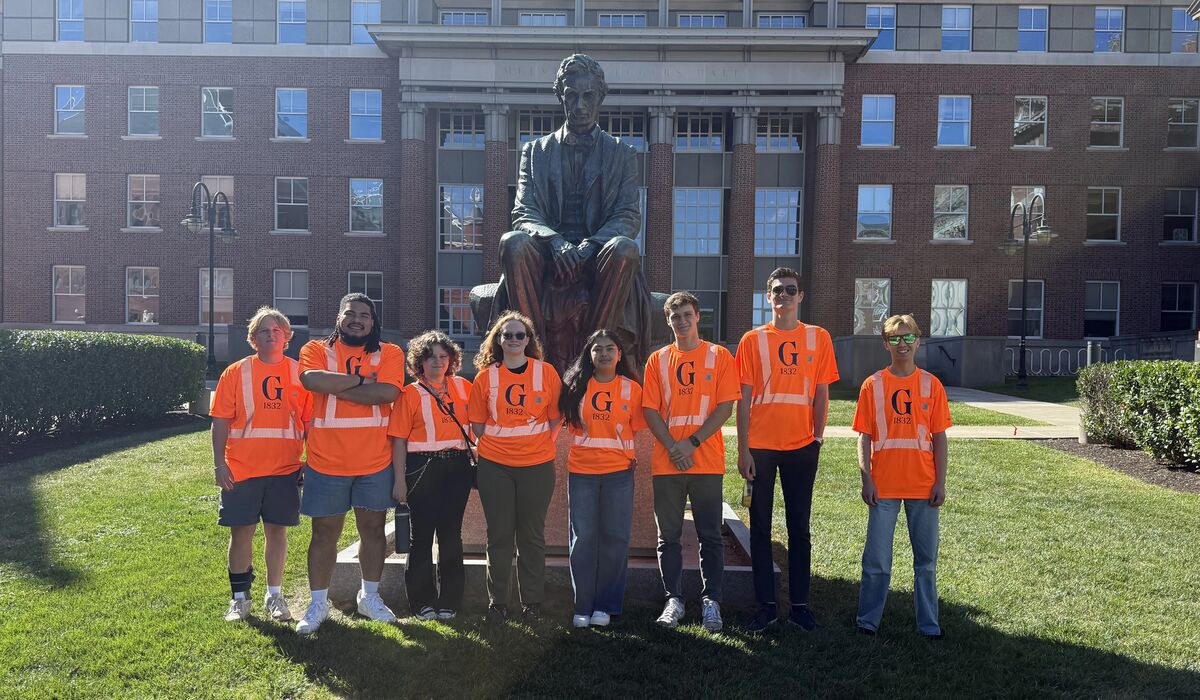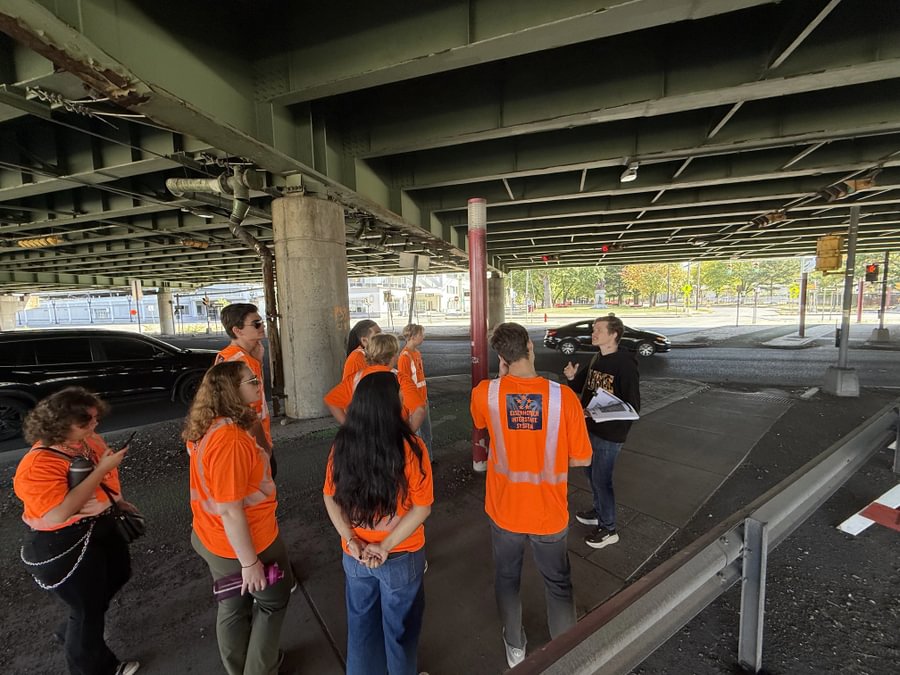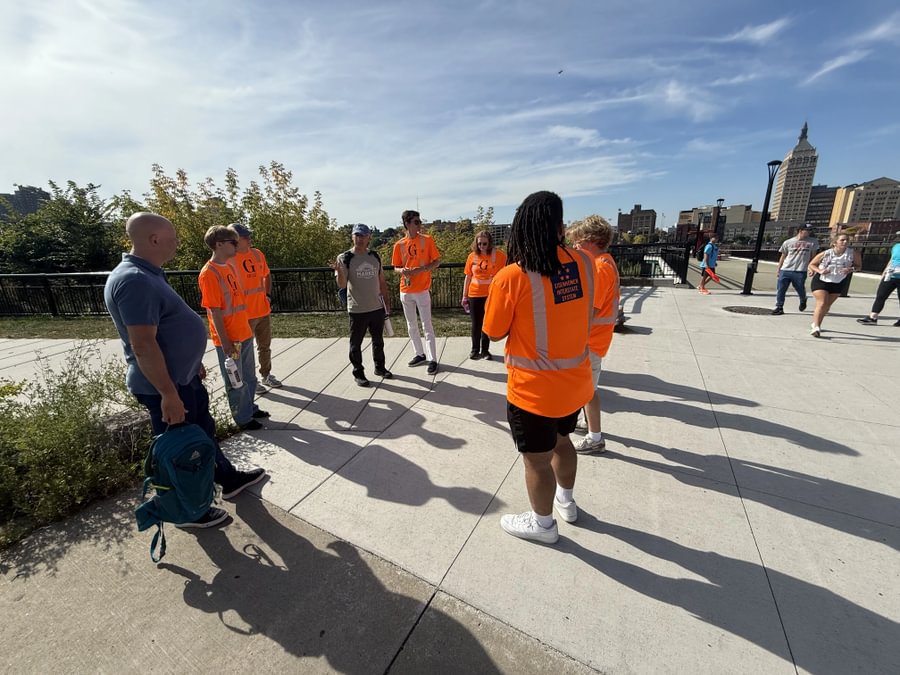
Through site visits, research, and reflection, the Eisenhower Institute’s Building America transportation programs enable students to explore the legacy of the interstate system and the new movement to rebuild more connected, equitable cities.
At Gettysburg College, the Eisenhower Institute’s Building America program invites students to explore some of the nation’s most important policy issues, including education, housing, and technological innovation. Recently, the program has taken a drive down one of the nation’s most influential—and often overlooked—policy roads: transportation.
Led by Public Policy Prof. Christopher Rick, the transportation-focused program has offered hands-on experiences that illuminate how highways, railways, and transit systems shape communities, economies, and lives across the country. Inspired by President Dwight D. Eisenhower’s role in the creation of the interstate highway system, Building America examines both the promise and the consequences of America’s postwar infrastructure boom.
“Transportation is something we interact with every day,” said Rick, who has worked on past projects for the Federal Highway Administration, U.S. Department of Energy, and Bureau of Transportation Statistics. “But few people stop to think about how deeply it affects the environment, access to opportunity, or even the social fabric of a neighborhood.”

Through two separate offerings of the program—a year-long seminar in 2024-2025 and a semester-long iteration this fall—students have studied the history and policy behind the Federal Highway Act and traveled to several sites where those policies are being reimagined today, including Syracuse and Rochester, New York; Richmond, Virginia; Baltimore, Maryland; and Gettysburg and Hanover, Pennsylvania. Each stop provided a living case study in how cities and towns are confronting decades of transportation decisions that once divided neighborhoods and limited mobility.
“Experiential learning allows students to see and feel the policy outcomes,” Rick noted. “Standing where neighborhoods were displaced or taking a bus that runs only a few times a day gives them a perspective that data alone can’t.”
In Syracuse, students stood beneath the elevated I-81, which is slated for removal after decades of cutting through the city’s historic South Side. When it was constructed six decades ago, the viaduct displaced more than 1,300 families and disconnected neighborhoods from local amenities such as hospitals, schools, and places of work.
The students also visited Rochester, where a similar highway has been filled in and replaced by new housing, green space, and businesses.
“It was meaningful to see the locations where transportation systems were undergoing change,” said Adam Noel ’27, an economics major from York, Pennsylvania. “Going from Syracuse, where a highway is being removed, to Rochester, where that process happened a decade ago, showed me the potential for land that’s been paved over—what it can become for housing, business, and community.”

Traveling beyond urban centers, the group also examined rural transit challenges firsthand by riding the Gettysburg-to-Hanover commuter bus, which operates just six times a day. Conversations with local riders underscored how transportation access influences employment and quality of life—especially in communities without robust public transit.
“After interning with the D.C. Highway Safety Office, I wanted to understand how America’s infatuation with the automobile shaped our cities,” said Adam Torres ’26, a public policy and political science double major from Philadelphia. “This program revealed that highways aren’t just roads. They can erode a city from within if they’re not thoughtfully designed.”
For Torres, the program also provided direction for his future. “It taught me that transportation policy is directly tied to health, socioeconomic status, and social welfare,” he said. “I hope to apply what I’ve learned in local government, helping design policies that respond meaningfully to people’s lived experiences.”
Through Building America, Gettysburg students are discovering that the roads, bridges, and buses that connect the nation tell a much larger story—one about community, justice, and the power of public policy to shape everyday life.
“I want students to learn how to communicate what they’ve experienced and share that understanding with others on campus,” Rick said. “We can’t take every student to Syracuse or Rochester, but we can empower these students to bring those lessons home.”
Learn more about the experiential learning opportunities provided by the Eisenhower Institute.
Related Links:
External Links:
By Corey Jewart
Photos provided by Public Policy Prof. Chris Rick
Posted: 11/04/25